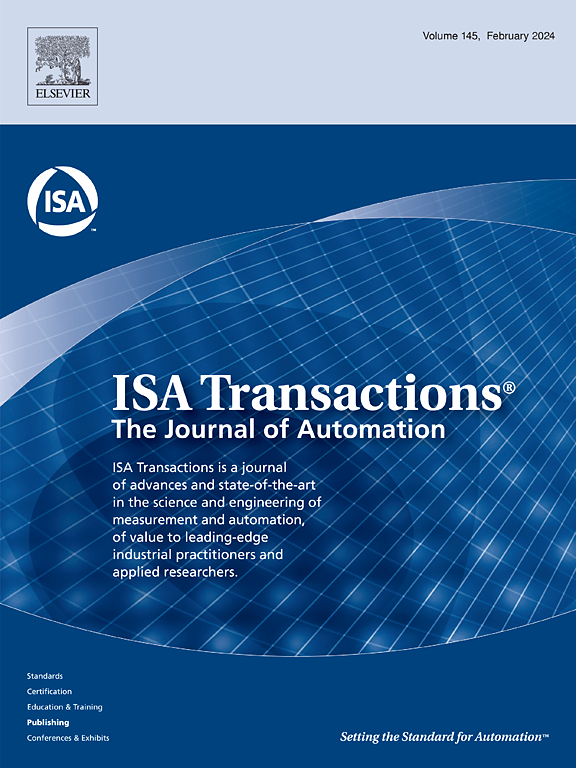Prediction-based rapid force control of a single-acting pneumatic cylinder under hysteresis nonlinearity
IF 6.3
2区 计算机科学
Q1 AUTOMATION & CONTROL SYSTEMS
引用次数: 0
Abstract
Hysteresis characteristics widely affects the performance and reliability of pneumatic systems across various industrial applications. Addressing this challenge can significantly enhance system efficiency and precision. This paper aims to develop a rapid and accurate method for controlling the actuating force of a Single-Acting Pneumatic Cylinder (SAPC), considering hysteresis characteristic. To achieve these objectives, a Neural-Network-Prediction-based Proportional-Integral-Differential (NNP-PID) control strategy is introduced for the rapid prediction and precise control of the actuating force. Control experiments were conducted to elucidate the rapid control mechanism of the proposed NNP-PID strategy and assess its performance. Experimental results indicate that the developed neural network prediction model operates with a computational cost of 1.22 ms on an 8-bit microcontroller, thus meeting real-time control requirements. Compared to a conventional Proportional-Integral-Differential (PID) controller, the NNP-PID controller reduced control overshoot, rise time, settling time, and steady-state error by approximately 17.5 %, 65.9 %, 19.8 %, and 46.4 %, respectively.
求助全文
约1分钟内获得全文
求助全文
来源期刊

ISA transactions
工程技术-工程:综合
CiteScore
11.70
自引率
12.30%
发文量
824
审稿时长
4.4 months
期刊介绍:
ISA Transactions serves as a platform for showcasing advancements in measurement and automation, catering to both industrial practitioners and applied researchers. It covers a wide array of topics within measurement, including sensors, signal processing, data analysis, and fault detection, supported by techniques such as artificial intelligence and communication systems. Automation topics encompass control strategies, modelling, system reliability, and maintenance, alongside optimization and human-machine interaction. The journal targets research and development professionals in control systems, process instrumentation, and automation from academia and industry.
 求助内容:
求助内容: 应助结果提醒方式:
应助结果提醒方式:


